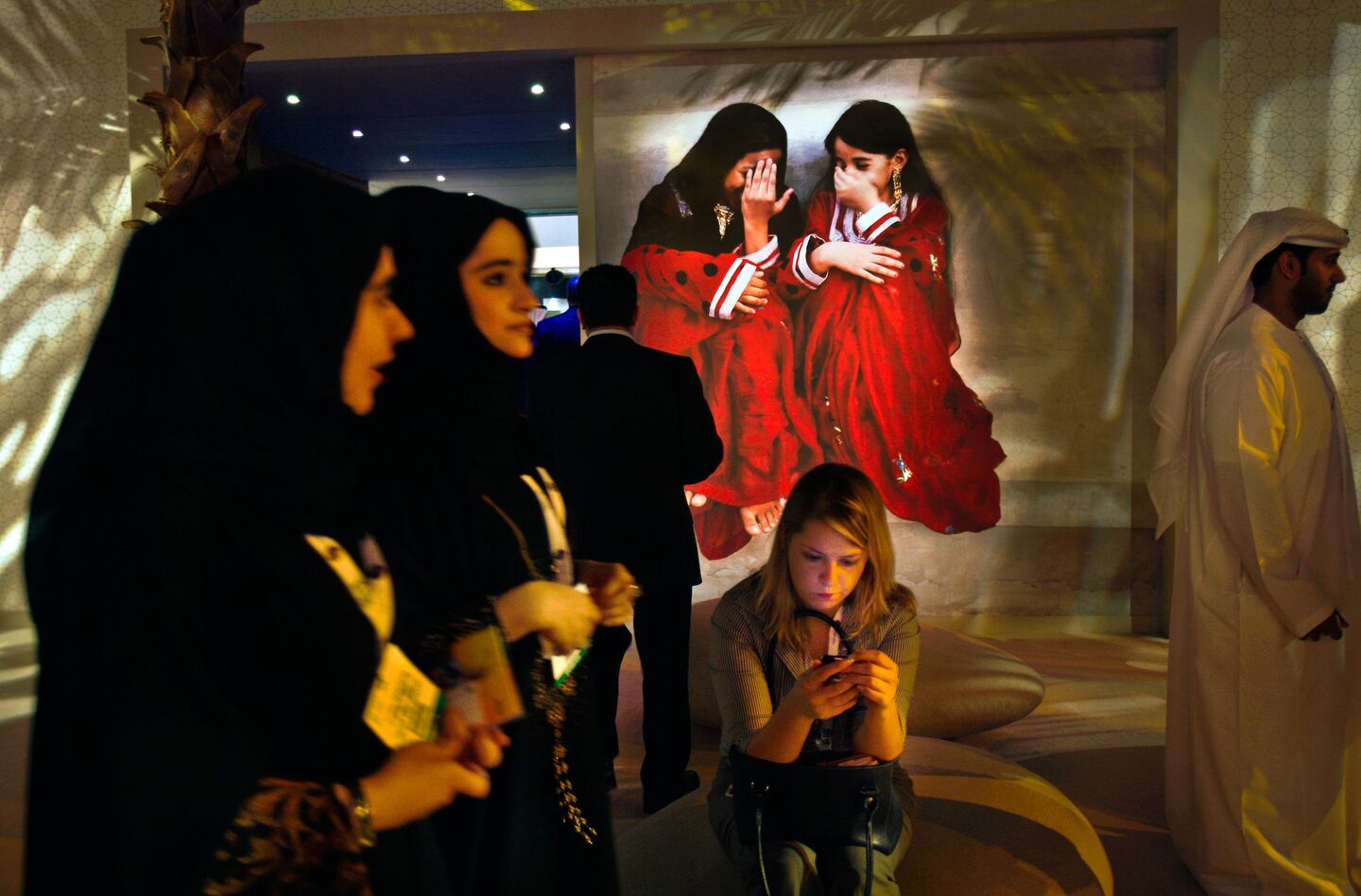
The Business of Fashion
Agenda-setting intelligence, analysis and advice for the global fashion community.

Agenda-setting intelligence, analysis and advice for the global fashion community.

DUBAI, United Arab Emirates — Just a few years ago, Gulf Arab women usually only felt comfortable showing off their fashion sense at ladies-only parties or family gatherings. In public, at least in their home countries, the standard all-black abaya — a simple floor-length covering and accompanying head scarf — was the only culturally accepted option.
But now, a new generation of abaya designers is giving the traditional garment a twist with choices of fabric, designs and even some expensive bling to allow Gulf women a host of style options.
The basic look of the abaya remains unchanged: black with long sleeves and a flowing form that somewhat conceals the shape of the body. Gulf culture and government directives encourage "national dress" for both sexes: Men wear full-length robes that are mostly white, but include other colors such as beige and blue.
Designers, however, have increasingly recognized the demand for abayas with a bit of extra flair. It can be as subtle as embroidery on the sleeves and hems or as eye-catching as gems stitched into the fabric. Top European fashion houses such as Dior, Nina Ricci and Alberta Ferretti have already put their stamps on abayas in the wealthy Gulf market for local woman, known as khalijiyat, after the Arabic name for the Gulf.
ADVERTISEMENT
The most expensive abaya so far has been valued at $17.7 million, created by British designer Debbie Wingham and displayed in Dubai in March. It features different colored diamonds including the world's most expensive and rare, the red diamond. There are more than 200,000 stitches in 14-karat white gold thread.
Among the Gulf countries, the United Arab Emirates — and particularly Dubai — is the center of the specialty abaya industry with exports going across the Middle East and North Africa and to some African Muslim countries. But since the Arab Spring uprisings, the UAE has sharply reduced visas from countries including Egypt, Tunisia, Syria and Libya.
This has led to a steep drop in sales. Kaleem Khan, a Bangladeshi abaya designer at the Abu Hail Center in Dubai, estimated that sales were down 70 percent because regular buyers cannot get visas to the UAE.
Copyright (2013) Associated Press. All rights reserved. This material may not be published, broadcast, rewritten, or redistributed.
From analysis of the global fashion and beauty industries to career and personal advice, BoF’s founder and CEO, Imran Amed, will be answering your questions on Sunday, February 18, 2024 during London Fashion Week.
The State of Fashion 2024 breaks down the 10 themes that will define the industry in the year ahead.
Imran Amed reviews the most important fashion stories of the year and shares his predictions on what this means for the industry in 2024.
After three days of inspiring talks, guests closed out BoF’s gathering for big thinkers with a black tie gala followed by an intimate performance from Rita Ora — guest starring Billy Porter.